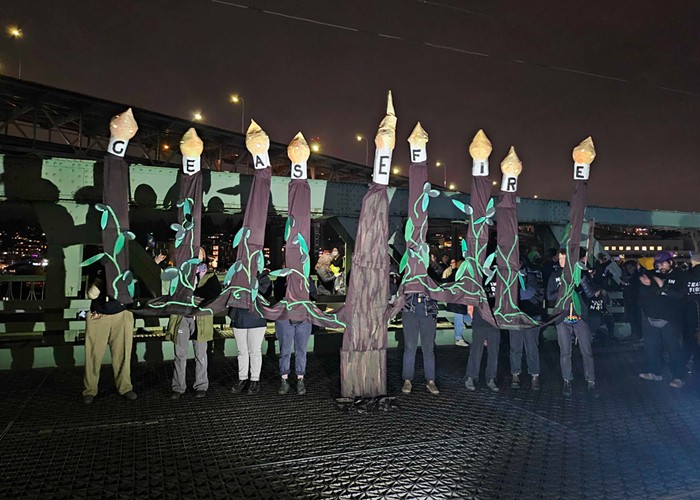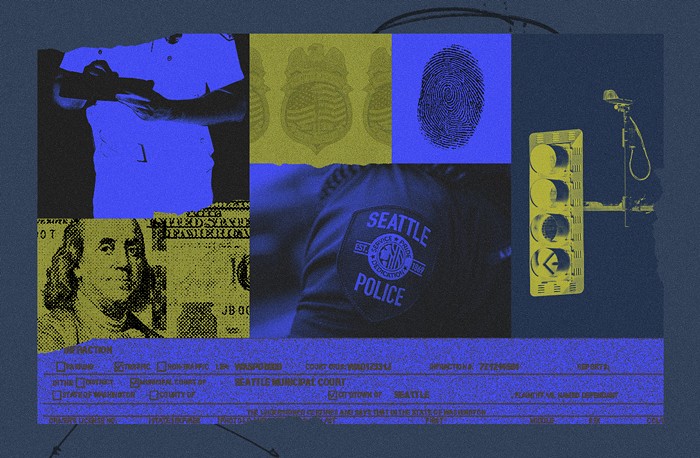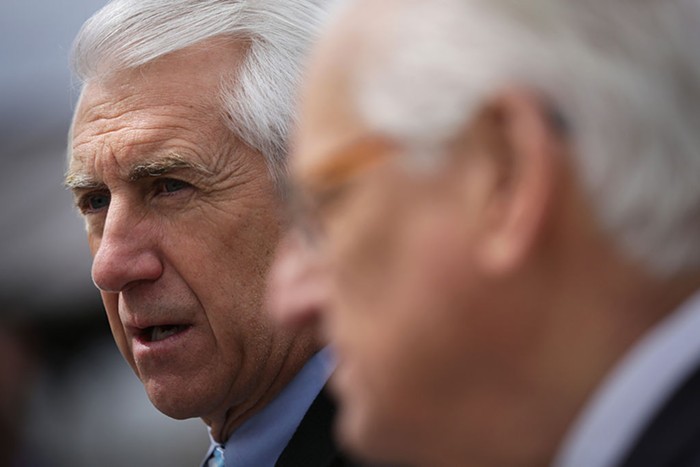
The scientists who gathered at the water's edge at the Shilshole Bay Marina this morning kept repeating themselves: This year is really, really strange. Water temperatures in Puget Sound are four degrees higher than normal. And because of the "Blob"—a 1,000-mile-wide mass of unusually warm water that cozied up to the West Coast more than a year ago—coupled with drought, scientists are watching unusual phenomena affect almost every aspect of life in the water.
They're also watching Seattle's possible climate-changed future unfold.
Can we blame this weird year on climate change? Not really; the signal's not strong enough. It's mostly natural variability. But what we're seeing this year is a preview of climate change for years to come.
"It really is a dress rehearsal for it," Nick Bond, the Washington State climatologist, said. "A winter that was pretty wet, but mostly rain in the mountains rather than snow, that's what all the models are showing. The idea that the summers are going to be hotter and drier... You know, again, this is a pretty good sneak preview. I don't know how many different metaphors I should trot out."
Anticipating a radical transformation of the Pacific Northwest can be depressing, sure. But scientists are also using this year's weirdness as an opportunity to study how the system responds to a climactic punch in the gut.
So here's what scientists say is happening right now:
• Scientists have named an enormous mass of warm water hovering off the Pacific coast the "Blob." (At least one researcher has called the phenomenon the "Super Bowl of climate anomaly.") On top of that, we've got a strong El Niño, an event in which weakened winds allow warm water to collect in the East Pacific. Together, the two "stack the deck" for having a "warmer, and perhaps drier than normal winter," Bond said. That could have consequences for low snowpack. Again.
• Because of extremely low snowpack this last winter, streamflows are at record-breaking lows this summer. Eighty percent of our streams are below normal. And low streamflows coupled with hotter temperatures mean salmon are struggling. Low streamflows also mean that Puget Sound is unable to be replenished by colder waters the way it normally would. Think of Puget Sound as a broken toilet bowl.
• Higher-than-normal water temperatures in Puget Sound impact biotoxins in shellfish. Paralytic shellfish poisoning has been detected in places the Washington State Department of Health has never seen it before, like in Hood Canal, and shellfish closures have spiked in the first half of 2015. These past six months have already seen 29 fishing closures, whereas 2014 saw 22 fishing closures... total. But the worst could be yet to come. In a normal year, the most closures usually occur in the late summer and fall.
• Record-breaking water temperatures, low streamflows, and poor water quality mean new winners and losers in the animal kingdom. Salmon are already losing because of the warm water and low streamflows, but they're doubly losing because there's less food (zooplankton) around to eat. If life is threatened at the bottom of the food chain, that problem will work its way up to the top, to mammals and sea birds, as well. Jellyfish, however, are winners. They're blooming in Puget Sound. Scientists have spotted some newcomer fish species from California, too.
"If this is a window on what's to come, we're looking at a very different environment than we might like to have," Correigh Greene, a research biologist at the Northwest Fisheries Science Center, said.

How the hell is that not insanely frustrating for someone whose job it is to be intellectually passionate about local wildlife?
"If I pause, think too long about it, right, there's a lot of doom and gloom," Greene told me later. "I have two kids, they're really interested in biology. That's a really big motivator to do things differently. I have to think about the hope for them, and the threat of things not being good in the future, as a big motivator. As a scientist, it's kind of hard. Because you're dealing with just the facts. People are going to do whatever they're going to do with the facts, so it's a difficult position to be in, just providing fact after fact and seeing people maybe ignore the facts."
Bond, the state climatologist, shared similar feelings. "It is sobering," Bond said. "And I've got two kids in their 20s, and the kind of world they're going to be experiencing is a much different one. And hopefully it's not a lot a meaner one."
"There's going to be all the more stress on the resources," Bond added. "What we've gotten used to in the Pacific Northwest, it's going to be a different place. I'm not sure how long we're going to have to wait until it's a lot different. Is this going to be what it's like in the 2040s or the 2050s? I don't know. I just know that it's headed this way."


















